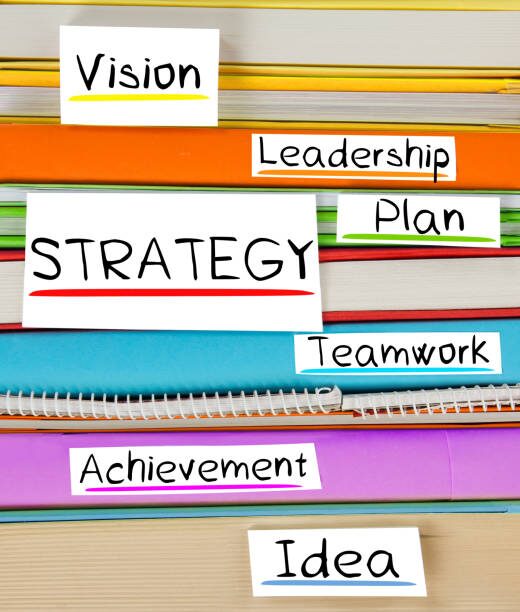By Jack Corby
Monday, October 20, 2025

Universities stand at a crossroads, where traditional governance structures are straining under the weight of unprecedented transformation. Demographic shifts are reshaping student populations, accreditation standards are becoming increasingly rigorous, and financial constraints are testing the resilience of institutional models. At the same time, technological disruption continues to redefine how knowledge is delivered, measured, and valued.
Within this environment, leadership that merely preserves the status quo is no longer sufficient. Institutions require Strategic Organizational Leadership that blends innovation with accountability, ensuring that universities remain both adaptive and mission-driven. It is not simply about managing change, but about cultivating governance and leadership practices capable of steering higher education through turbulence toward long-term vitality.
The Changing Landscape of Higher Education Leadership
The framework of organizational leadership in higher education is no longer straightforward. Universities must navigate competing priorities between boards, faculty, administration, and external stakeholders while ensuring decisions remain mission-driven.
Intensified External Pressures
Federal regulations, shifting accreditation standards, and evolving demographic realities have increased the scrutiny on university leaders. These pressures demand governance models that can simultaneously uphold academic excellence and respond to fiscal and societal constraints.
Innovation Paired with Accountability
Institutions cannot rely on legacy leadership structures. Effective governance requires leadership models that introduce bold innovation while reinforcing accountability and transparency. The capacity to act decisively, yet responsibly, has become a defining trait of institutional strength.
Strategic Guidance Through Consulting
Expert support in educational leadership consulting provides universities with tested frameworks for aligning institutional vision with operational execution. These approaches help leaders transform broad strategies into practical systems that sustain institutional effectiveness.
Organizational Leadership as the Foundation of Institutional Effectiveness
| Core Dimension | Institutional Impact | Strategic Connection |
| Decision-Making & Resource Allocation | Determines efficiency in governance and sustainability of operations. | Strong organizational leadership ensures resources are deployed to align with institutional mission and long-term goals. |
| Academic Quality & Reputation | Shapes the university’s ability to maintain rigorous standards and foster credibility. | Leadership practices strengthen institutional reputation, supporting student success and faculty excellence. |
| Academic Organizational Development | Connects leadership style with measurable growth in academic performance. | Evidence shows that governance rooted in clarity and accountability advances academic organizational development across departments. |
School Governance Improvement as a Strategic Imperative
Why Governance Reform Matters
- Universities must reconcile centuries-old traditions with modern expectations of agility, accountability, and transparency.
- Strong governance creates the foundation for institutional trust, guiding decision-making that preserves mission while enabling adaptability.
- Without deliberate school governance improvement, institutions risk eroding credibility with accrediting bodies, students, and external stakeholders.
Challenges with Outdated Models
- Fragmented Authority: Power struggles between boards, faculty, and administrators hinder unified action.
- Slow Response Mechanisms: Traditional governance structures often delay responses to demographic shifts, financial pressures, or accreditation requirements.
- Limited Accountability: The lack of mechanisms to evaluate governance effectiveness leads to stagnation or resistance to reform.
- Cultural Resistance: Deeply rooted academic traditions sometimes clash with the need for modern administrative efficiency.
Strategic Practices for Effective Reform
- Balanced Governance Frameworks: Develop systems that preserve faculty participation while empowering administration to act decisively in times of transformation.
- Structured Communication Channels: Establish formalized dialogue pathways between boards, leadership, and faculty senates to ensure that decisions reflect the broad institutional perspectives.
- Performance Evaluation of Governance Bodies: Introduce compliance-informed reviews that assess the effectiveness, transparency, and adaptability of governing structures.
- Integration into Strategic Planning: Embed school governance improvement into institutional strategy rather than treating it as a reactive measure.
- Collaboration Culture: Foster a culture of shared ownership, ensuring governance strengthens cohesion rather than deepening division.
University Leadership Training for the Modern Era
The Need for Dynamic Development
Leadership cannot remain static while higher education undergoes rapid demographic, technological, and financial shifts. Institutions require leaders prepared for volatility and complexity.
Core Dimensions of Modern Training
- Decision-Making Under Uncertainty
Leaders must navigate incomplete data, unpredictable funding models, and shifting student expectations with confidence and foresight. - Managing Diverse Stakeholders
Governance today involves faculty, students, alumni, boards, regulators, and community partners. Training equips leaders to balance competing priorities while preserving institutional mission. - Fostering Innovation
Innovation is not optional; it is a condition of survival. Structured university leadership training develops the capacity to introduce new models of teaching, research, and administration.
The Acceleration of Higher Education
The sector is evolving faster than ever, and leadership that fails to keep pace risks institutional decline. Training programs must prepare leaders to anticipate transformation rather than merely react.
Structured Training as a Catalyst for Change
Well-designed leadership development frameworks strengthen institutional capacity for adaptation, enabling universities to align strategic goals with actionable progress in real time.
Strategic Organizational Leadership in Practice
From Traditional Leadership to Strategic Leadership
| Traditional Approach | Strategic Organizational Leadership |
| Reactive decision-making in response to crises | Proactive, evidence-based planning that anticipates challenges |
| Limited stakeholder input, often siloed governance | Broad stakeholder engagement that strengthens institutional cohesion |
| Compliance is treated as a constraint | Compliance-informed strategies integrated into long-term vision |
| Incremental change focused on preservation | Transformational change that aligns innovation with accountability |
The Consulting Dimension
External partners provide the tools and methodologies to turn these principles into practice. Firms such as Stevens Strategy design tailored solutions that:
- Translate institutional mission into measurable outcomes.
- Build governance frameworks that sustain transparency and adaptability.
- Equip leaders to guide effective transitions while safeguarding academic quality.
Academic Organizational Development as a Continuous Process
- Institutional Commitment Beyond One-Time Reform
Academic organizational development must be understood as a continuous cycle, not a temporary initiative. Universities that embed development into long-term planning create resilience against demographic shifts, financial constraints, and evolving accreditation standards.
- Faculty Leadership as a Catalyst
Strong organizational leadership at the faculty level ensures that innovation in teaching, research, and curriculum design is tied directly to the institutional mission. Faculty participation is central to sustaining credibility and advancing academic quality.
- Governance Structures as Anchors of Stability
Boards and administrative councils provide the framework for effective school governance improvement. When governance structures are transparent and accountable, they reinforce both institutional reputation and operational efficiency.
- Administrative Systems as Engines of Change
Operational systems from finance to student services drive institutional agility. By integrating strategic organizational leadership principles, these systems become more responsive to evidence-based planning and compliance-informed strategies.
- The Culture–Structure Nexus
Resilience emerges when organizational culture embraces adaptability and governance reform supports it. Universities that align leadership culture with educational leadership consulting practices sustain growth, preserve reputation, and strengthen institutional capacity over time.
How Stevens Strategy Guides Institutional Leadership Transformation
Expertise with Institutional Depth
Stevens Strategy has established itself as a trusted partner in higher education consulting, working with universities that seek to align governance, leadership, and mission with the demands of transformation. Our approach integrates evidence, stakeholder collaboration, and compliance-informed practices to strengthen institutional capacity at every level of leadership.
Comprehensive Service Framework
Educational Leadership Consulting
We provide customized consulting that addresses the distinct challenges of each institution. Through targeted organizational leadership strategies, we help universities design governance systems that are transparent, accountable, and adaptable. This process equips institutions to sustain academic credibility while improving decision-making effectiveness.
Strategic Planning
Our methodology combines evidence-based planning with long-range visioning, ensuring institutions can adapt to demographic change, financial constraint, and evolving accreditation expectations. By embedding strategic priorities into governance structures, we create plans that are both mission-driven and operationally realistic.
Executive Coaching
University leaders operate in an environment where complexity and scrutiny are constant. Our executive coaching strengthens their capacity to govern effectively, manage diverse stakeholders, and apply strategic organizational leadership principles in real time. Coaching is tailored to presidents, provosts, and senior administrators whose leadership shapes the institution’s trajectory.
Strategic Organizational Leadership Frameworks
Stevens Strategy advances frameworks that integrate data-driven analysis, compliance-informed strategies, and institutional mission. These frameworks give universities the structure to act decisively in times of uncertainty while maintaining transparency and accountability in governance.
University Leadership Training
Higher education evolves at a pace that demands continual leadership development. Our university leadership training programs emphasize critical competencies: decision-making under uncertainty, stakeholder management, and the fostering of institutional innovation. These programs cultivate resilience and strengthen the link between governance capacity and institutional growth.
Proven National Record
Our track record demonstrates the impact of this integrated approach. Universities across the nation have engaged Stevens Strategy to reinforce academic organizational development, strengthen governance performance, and expand leadership effectiveness. By embedding best practices in school governance improvement and long-term planning, we help institutions advance academic quality while preparing for the next phase of transformation.
Conclusion
Reimagining academic leadership is central to how colleges and universities sustain their missions amid transformation. Institutions that invest in educational leadership consulting, cultivate adaptable governance, and adopt strategic organizational leadership frameworks position themselves not only to withstand external pressures but to expand their influence in shaping the future of higher education.
Stevens Strategy offers the depth of expertise required to turn leadership reform into measurable results. Through university leadership training, executive coaching, and data-driven strategic planning, the firm helps institutions strengthen decision-making, align governance with mission, and reinforce academic and administrative resilience.
Now is the time for universities to act with intention. By partnering with Stevens Strategy, institutions gain access to tailored solutions that elevate leadership capacity, ensure institutional continuity, and drive long-term growth in an increasingly competitive academic environment.





